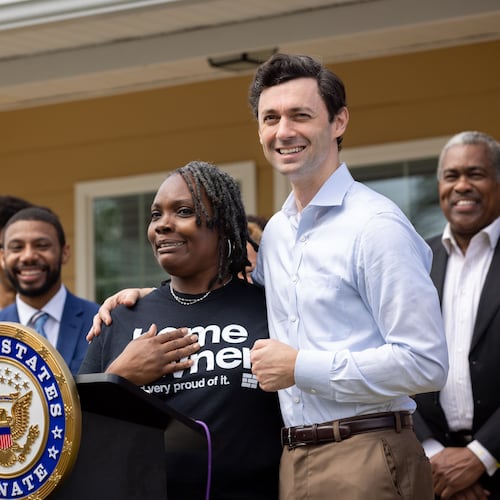Georgia Republicans are obsessed with guns — guns guns guns guns guns — and they’re downright terrified of immigrants.
Also, guns.
That’s certainly the impression left by the campaign commercials being aired in the GOP gubernatorial primary. Those ads were created by political consultants paid to know their audience, on behalf of politicians competing to lead their party, and presumably are based on reams of internal polling data. If anyone should know what drives the GOP base, they should, and their ads reflect it.
The contrast with their Democratic counterparts could not be more stark. Stacey Evans and Stacey Abrams are appealing to Georgia Democrats by talking about issues such as education, the HOPE scholarship and Medicaid expansion. The two parties aren’t just talking to two different audiences; it’s as if those audiences exist in two different realities.
At this point, Lt. Gov. Casey Cagle is the Republican favorite not just to win the nomination, but to win it outright next Tuesday without a runoff. The most recent AJC-Channel 2 Action News poll, taken roughly three weeks ago, put Cagle at 41 percent, more than 30 points ahead of his closest competitor. That’s well short of the 50 percent that Cagle needs to avoid a runoff, but with a third of Republican voters still undecided when the poll was taken, it would be a bit of an upset should he be forced into a runoff.
However, if that upset occurs, Georgia Democrats would awaken the next morning energized. Not only would it demonstrate a weakness in Cagle’s candidacy, it would guarantee two more months of gun-centric TV ads likely to alienate the suburban, female vote that Democrats would need to win.
On the Democratic side, Abrams is the favorite but the electorate is harder to read. The former House minority leader is smart, experienced and telegenic, with a personal style that projects both competence and friendliness. A lot of politicians have one quality or the other, but only a few are blessed to have both. That combination has already made Abrams a bit of a media star on the national scene.
However, that also has had drawbacks. For example, if your goal in a campaign is to make yourself a national political figure, it makes sense to talk about wanting to sandblast the sculptures off the side of Stone Mountain, as Abrams proposed early in the race. Do that, and you’ll be lauded for courage and moral leadership by national Democrats. You may even be right, although personally I think those carvings should be preserved as a reminder to future generations of the racism and injustice that put them there.
However, if your goal is to give Georgia Democrats their best shot possible to elect a governor, in a year when the political world is in tumult and the impossible might be possible, I’d argue that the costs of such a symbolic statement far exceed the benefits. That is not, for example, the kind of proposal that Barack Obama would have made in his two successful campaigns for president.
I’m also dubious about the basic math behind Abrams’ strategy to maximize general-election turnout from the black and minority communities, particularly in a year when moderate white voters might be more receptive to Democrats than ever. Evans — also a smart, savvy politician — is better equipped to make a broader appeal to voters, not because of race but simply because as a candidate, she has chosen to stress that message more than her opponent. If you want someone’s vote, you have to ask for it.
About the Author
Keep Reading
The Latest
Featured


